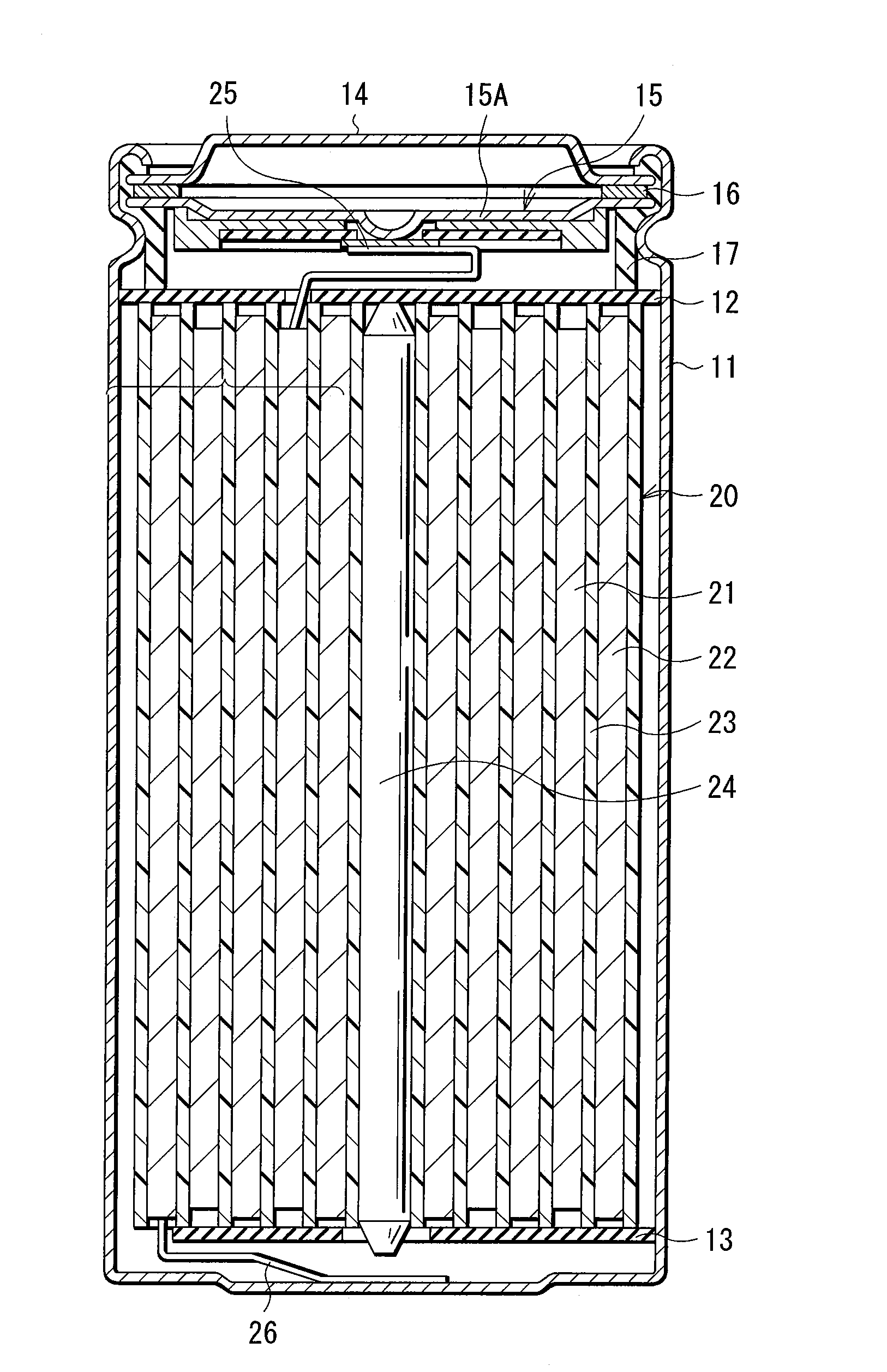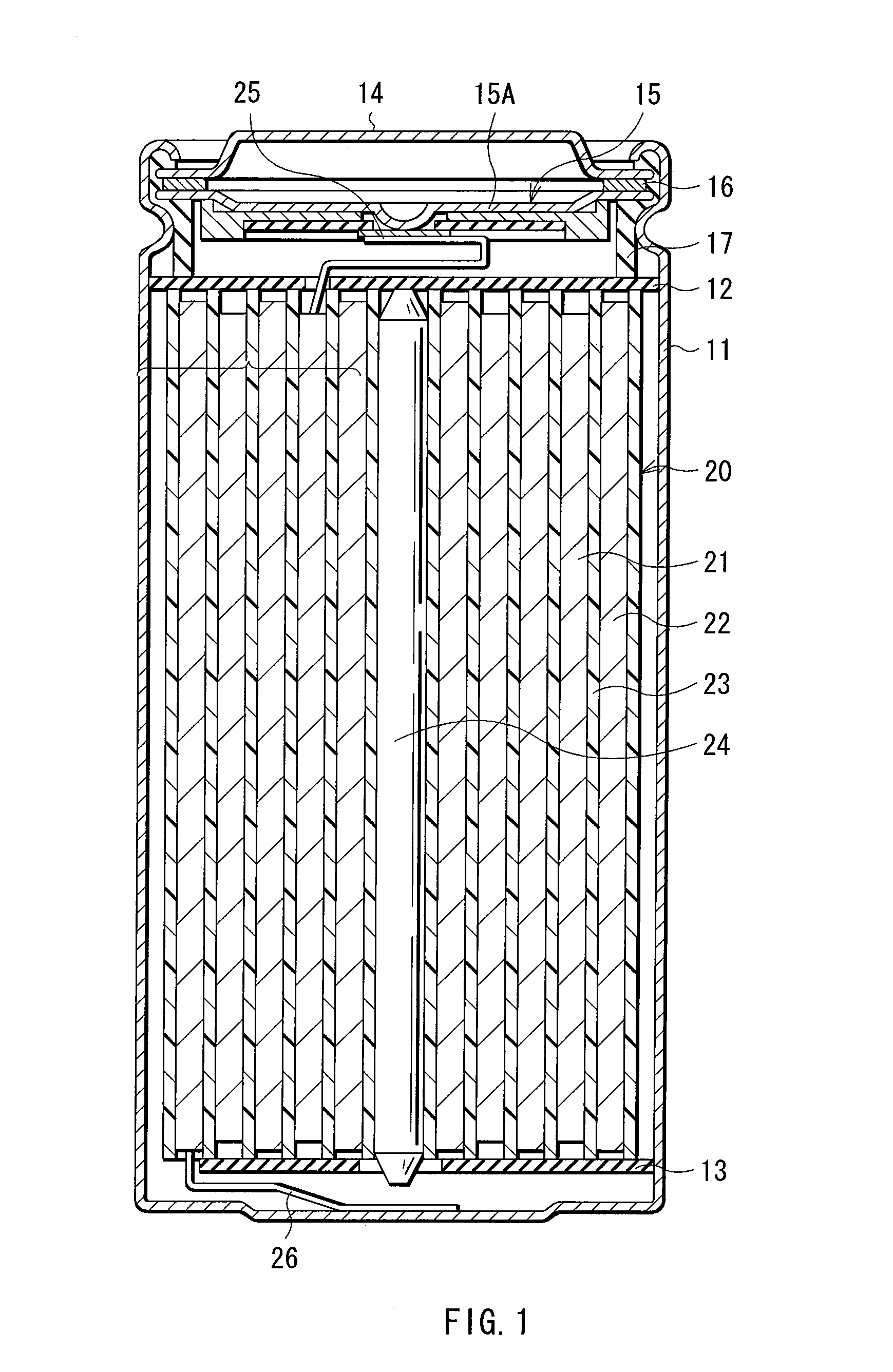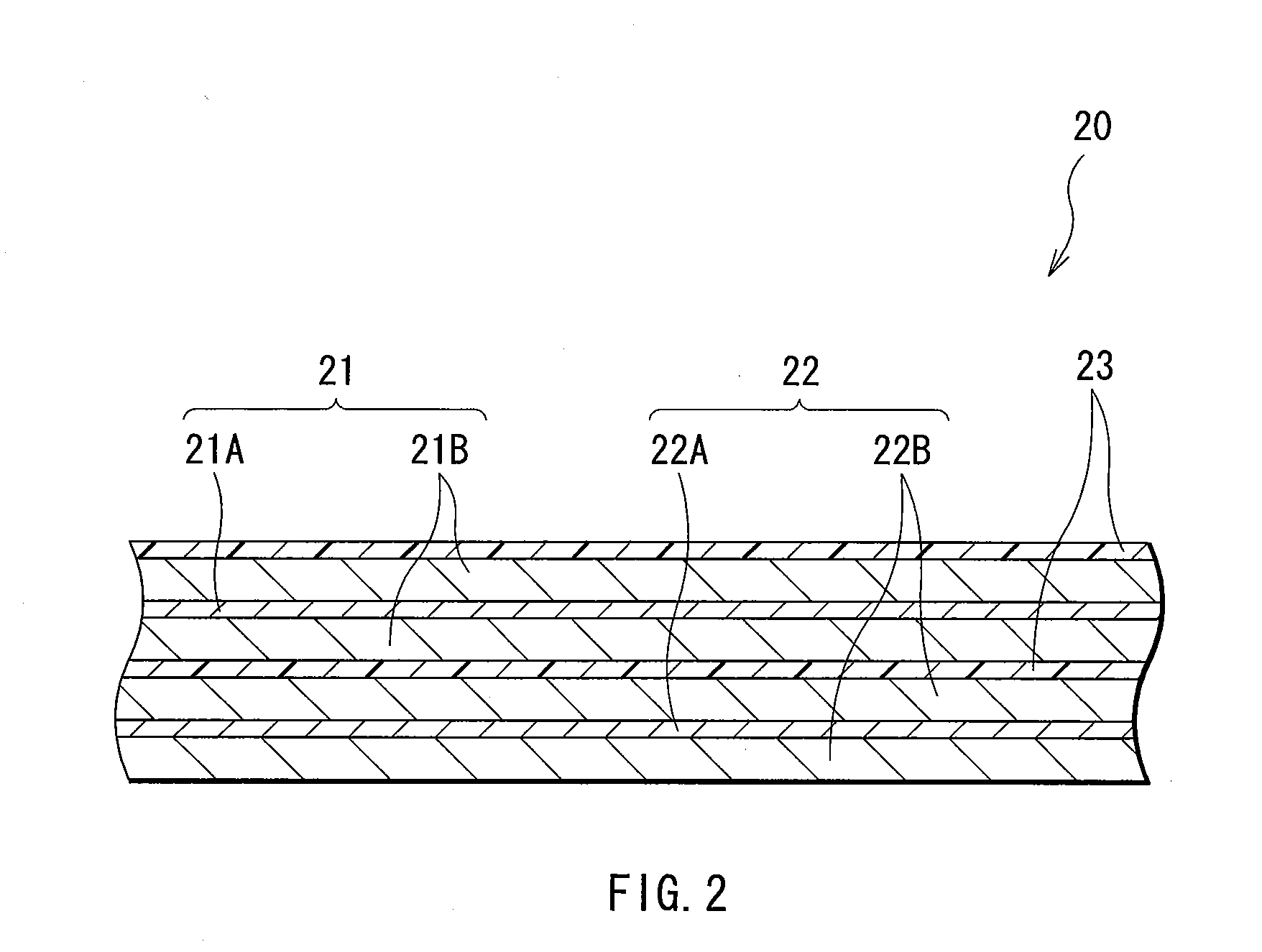Cathode active material, method of manufacturing the same and battery
a technology of active materials and cathode, which is applied in the direction of cell components, electrochemical generators, and nickel compounds, can solve the problems of insufficient improvement and decline in discharge capacity, and achieve the effects of high capacity, improved chemical stability and low-temperature characteristics, and high energy density
- Summary
- Abstract
- Description
- Claims
- Application Information
AI Technical Summary
Benefits of technology
Problems solved by technology
Method used
Image
Examples
examples
[0075]Specific examples of the invention will be described in detail below.
examples 1-1 to 1-5
[0076]The cathode active material was formed by the following steps. At first, lithium carbonate (Li2CO3), cobalt carbonate (CoCO3), aluminum hydroxide (Al(OH)3) and manganese carbonate (MgCO3) as commercial reagents were mixed well while pulverizing them in a ball mill. At that time, the molar ratio of lithium, cobalt, aluminum and magnesium was Li:Co:Al:Mg=1.05:0.98:0.01:0.01. Next, after the mixture was preliminarily fired for 5 hours in air at 650° C., and was kept for 20 hours in air at 950° C., the mixture was cooled down to 150° C. by reducing the temperature by 7° C. per minute to synthesize a lithium complex oxide. After that, the lithium complex oxide was taken out to a room-temperature environment, and was pulverized to form the lithium complex oxide into a particulate lithium complex oxide, and the lithium complex oxide was used as the central section. When the particle diameter of the formed central section was measured by a laser scattering method, the average particle...
examples 2-1 to 2-3
[0096]Cathode active materials were formed by the following steps. At first, nickel sulfate, cobalt sulfate and manganese sulfate were mixed as solutions to form a mixture, and ammonia water and a sodium hydroxide solution were dropped in the mixture while stirring to form a nickel-cobalt-manganese complex hydroxide, and the nickel-cobalt-manganese complex hydroxide was mixed with lithium hydroxide to form a mixture, and the mixture was heated for 10 hours at 900° C. in an oxygen stream to synthesize a nickel-cobalt-manganese complex oxide. When the obtained fired body was analyzed by atomic absorption spectrometry, the composition of the fired body was Li1.02Ni0.1Co0.8Mn0.1O2. Moreover, the nickel-cobalt-manganese complex oxide was similar to the pattern of LiCoO2 in the JCPDS (Joint Committee of Powder Diffraction Standard) file card No. 50-0653, so it was confirmed that the same bedded salt structure as that of LiCoO2 was formed in the nickel-cobalt-manganese complex oxide. Next,...
PUM
| Property | Measurement | Unit |
|---|---|---|
| mol % | aaaaa | aaaaa |
| open circuit voltage | aaaaa | aaaaa |
| operating voltage | aaaaa | aaaaa |
Abstract
Description
Claims
Application Information
 Login to View More
Login to View More - R&D
- Intellectual Property
- Life Sciences
- Materials
- Tech Scout
- Unparalleled Data Quality
- Higher Quality Content
- 60% Fewer Hallucinations
Browse by: Latest US Patents, China's latest patents, Technical Efficacy Thesaurus, Application Domain, Technology Topic, Popular Technical Reports.
© 2025 PatSnap. All rights reserved.Legal|Privacy policy|Modern Slavery Act Transparency Statement|Sitemap|About US| Contact US: help@patsnap.com



